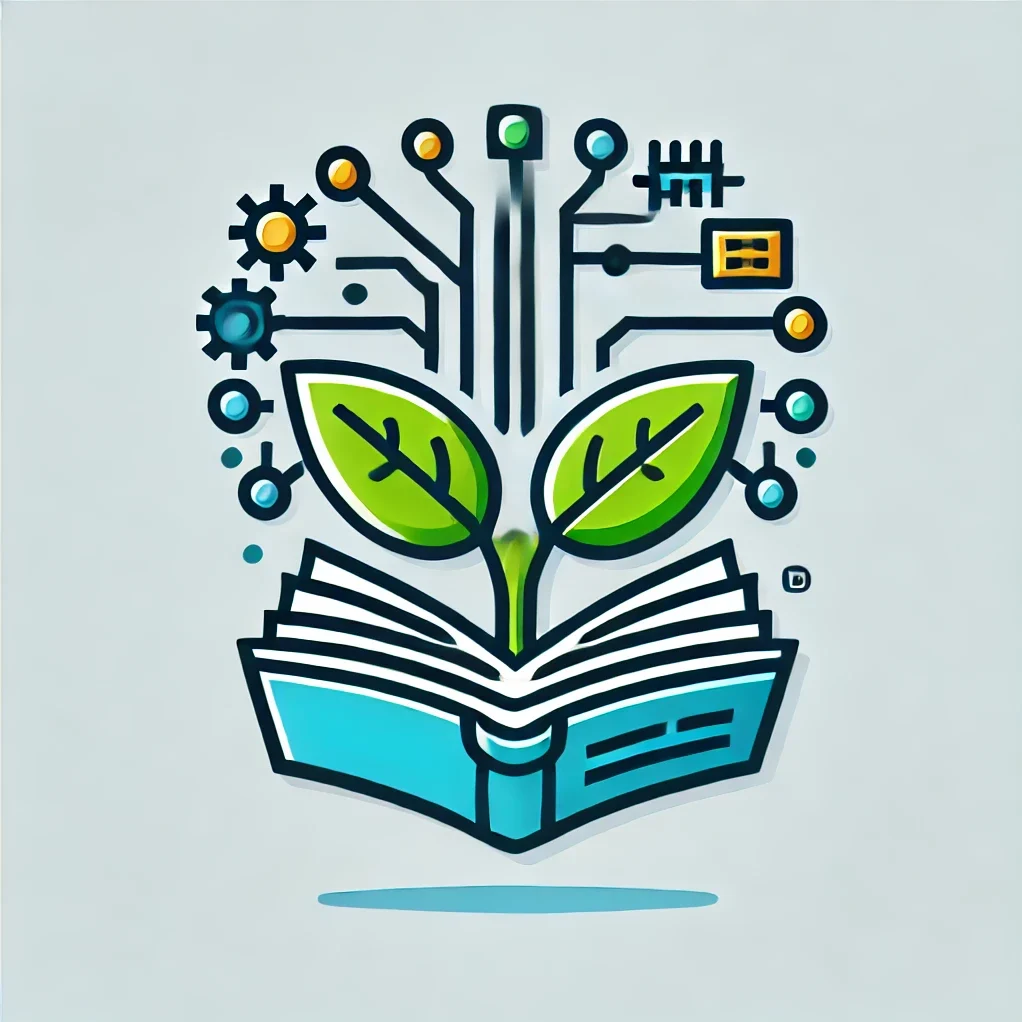Aquaponic System for Organic Vegetable and Fish Farming with Low Initial Investment
Aquaponics represents an innovative union of aquaculture and hydroponics in which fish and plants thrive in a mutually beneficial cycle. In this system, waste from fish becomes natural fertilizer for the plants while the plants filter the water to create a pristine environment for the aquatic life. This harmonious integration enhances sustainability and offers an organic alternative to conventional farming methods with minimal startup expenditure.
Introduction
Aquaponics has emerged as a transformative solution in the realm of sustainable agriculture. This method seamlessly amalgamates fish rearing with soil-free plant cultivation in a recirculating ecosystem. The fish produce nutrient-rich effluent that nourishes the plant roots while the plants, in turn, cleanse the water for the fish. This cyclical relationship diminishes water consumption significantly and eliminates the need for synthetic fertilizers. Aquaponics fosters a more organic and environmentally friendly means of producing food by harnessing natural processes. Additionally, its design suits individuals or communities operating under a constrained budget because many components can be built from recycled materials and locally available resources.
How the Aquaponic System Works
In aquaponic systems, the underlying principle is the symbiotic interplay between fish and plants. Fish excrete ammonia as a metabolic byproduct, which is subsequently oxidized by nitrifying bacteria to form nitrites and then nitrates. Plants absorb these nitrates as essential nutrients for growth. This natural conversion diminishes the buildup of harmful substances and ensures the water remains conducive to fish health. The process is sustained by an ecosystem that thrives on balance. Maintaining appropriate pH levels, temperature, and dissolved oxygen is vital for the well-being of both flora and fauna. A well-designed aquaponic system capitalizes on biomimicry and nature’s inherent design principles to sustain a flourishing environment.
Biological Interactions
Aquaponic setups depend on robust microbial communities to facilitate nutrient cycling. Heterotrophic and autotrophic bacteria play significant roles in transforming waste into plant-available nutrients. The deliberate design of these microbial networks is essential for system stability. This biological interplay offers an exemplary case of ecological engineering, where the micro-ecosystem ensures that organic matter is efficiently recycled.
Water Circulation and Filtration
Water circulation in an aquaponic system is pivotal. The process involves continuous water flow from the fish tank to the plant beds and back again. This flow not only distributes nutrients evenly but also aids in maintaining consistent temperature and oxygen levels. Water pumps and gravity-based siphoning techniques are used in many low-budget systems to keep the necessary flow. This dynamic process replaces the need for extensive mechanical filtration and reduces overall system complexity.
Benefits of Aquaponics
Aquaponic farming offers myriad advantages that extend beyond simply producing organic food. This system maximizes resource efficiency while minimizing waste. One significant benefit is the drastic reduction in water usage compared to traditional soil-based agriculture. Since the water is recycled continuously, evaporation and runoff are significantly curtailed. Furthermore, integrating fish and vegetables creates a closed-loop ecosystem that naturally combats pests and diseases without chemical interventions.
Enhanced Nutrient Cycling
Aquaponic systems are celebrated for their efficient nutrient-cycling capabilities. The biological conversion of fish waste into usable plant fertilizer ensures that all inputs are recycled, thereby minimizing the need for external chemical fertilizers. This process reduces operational costs and contributes to a healthier ecosystem overall. The complete utilization of resources exemplifies the principles of a circular economy and environmental stewardship.
Reduced Environmental Impact
Traditional agriculture often relies on large volumes of water and synthetic chemicals that can have adverse environmental impacts. In contrast, aquaponics promotes water conservation and the use of organic inputs. The absence of soil eliminates the risk of erosion and degradation of farmland. Moreover, the reliance on natural processes minimizes carbon emissions typically associated with industrial farming practices. This sustainable approach aligns with global efforts to mitigate climate change and preserve natural ecosystems.
Economic Viability and Low Initial Investment
One of the most appealing aspects of aquaponic farming is its economic feasibility, particularly for small-scale or urban farmers. Low-cost materials such as reclaimed wood, plastic barrels, and used fish tanks can be repurposed to construct an efficient system. Adopting simple yet effective design principles makes it possible to initiate aquaponic farming with minimal capital outlay. This affordability makes aquaponics an accessible venture for individuals seeking to produce organic food without incurring heavy financial burdens.
Designing a Low-Cost Aquaponic System
Careful planning and resourcefulness are essential when embarking on an aquaponic farming venture with limited resources. The design process involves selecting the appropriate fish species and vegetable crops, designing an efficient layout, and sourcing inexpensive yet durable materials.
Selecting Suitable Fish and Plants
A successful aquaponic system begins with selecting resilient fish species and robust plant varieties. Tilapia is a common choice for aquaponics owing to its adaptability, rapid growth, and tolerance for varying water conditions. For vegetable cultivation, leafy greens like lettuce, spinach, and herbs thrive under aquaponic conditions. Choosing species that are well-suited to the local climate and environmental conditions ensures the longevity and productivity of the system.
Utilizing Affordable Materials
Constructing an aquaponic setup does not require expensive equipment. Many enthusiasts repurpose used containers, barrels, or even old aquariums to serve as fish tanks. Similarly, planting beds can be fabricated from inexpensive materials such as PVC piping, recycled wood, or repurposed plastic tubs. Embracing the concept of upcycling can significantly reduce initial expenses while contributing to sustainability. Resourcefulness in material selection is paramount for achieving an efficient and cost-effective system.
System Layout and Configuration
The system’s design should facilitate optimal water flow and ease of maintenance. A modular design approach allows for incremental expansion as experience and resources grow. The system’s primary components include a fish tank, a biofilter section, a mechanical filtration unit, and plant-growing beds. Ensuring that these components are arranged in a logical sequence maximizes efficiency. Gravity-based water flow can be harnessed creatively to reduce energy consumption and lower operating costs.
Tips and Tricks for Successful Implementation
Embarking on an aquaponic venture requires practical knowledge, experimentation, and persistence. Below are several tips and tricks to enhance the success of your system
Start with a Pilot System
Before scaling up, it is advisable to construct a small pilot system. This approach lets you become acquainted with the nuances of aquaponic dynamics without committing significant resources. A pilot system is a testing ground for adjusting water chemistry, monitoring fish health, and observing plant response. Once the pilot system stabilizes, its design can be replicated or expanded.
Monitor Water Quality Religiously
Maintaining optimal water quality is the cornerstone of a thriving aquaponic system. Regularly testing pH, ammonia, nitrite, and nitrate levels is essential. Investing in simple water testing kits can help you quickly identify any imbalances. Once anomalies are detected, prompt corrective measures should be taken to restore equilibrium. Consistent water quality monitoring protects fish health and ensures that plants receive the necessary nutrients for growth.
Embrace Biodiversity
Incorporating diverse plant species within the system can improve nutrient absorption and pest control. Certain plants have natural pest-repellent properties and can act as a biological barrier against common infestations. Additionally, diversifying plant species contributes to a more resilient system that can withstand environmental fluctuations. Biodiversity also offers the added benefit of varied produce, catering to multiple culinary and nutritional needs.
Optimize System Layout
The layout of an aquaponic system can significantly impact its efficiency. Consider factors such as sunlight exposure, spatial arrangement, and accessibility for maintenance. Position the fish tank where it receives adequate natural light while remaining sheltered from extreme temperatures. Plant beds should be arranged to maximize exposure to sunlight and airflow. An optimized layout enhances productivity and simplifies routine tasks such as harvesting and cleaning.
Leverage Local Knowledge and Community Resources
One of the hidden gems of aquaponic farming is the wealth of knowledge available within local communities and online forums. Engaging with fellow enthusiasts can provide valuable insights and innovative ideas for overcoming common challenges. Local agricultural extension services or community gardens often offer workshops or informational sessions that can bolster your understanding of aquaponic systems. Collaborative learning is a powerful tool that can lead to creative solutions and shared success.
Maintain a Proactive Maintenance Schedule
Preventative maintenance is crucial for long-term system stability. Regular inspection of pumps, pipes, and filters can preempt catastrophic failures. Keeping a maintenance log helps in tracking the performance of various system components. This proactive approach ensures that minor issues are addressed before they escalate into significant problems. In addition, maintaining a clean system prevents the buildup of algae and pathogens that could disrupt the ecosystem’s delicate balance.
Challenges and Solutions
Despite the promising advantages, aquaponic farming is not devoid of challenges. Understanding these obstacles and their potential solutions is key to sustaining the system.
Temperature Fluctuations
Temperature plays a critical role in the health of fish and plants. Sudden temperature changes can stress fish and slow plant growth. In regions with extreme weather variations, it is advisable to incorporate insulation or temperature control mechanisms. Low-cost methods such as thermal blankets for fish tanks or greenhouses can help mitigate the effects of temperature extremes.
Balancing Nutrient Levels
One of the more intricate aspects of aquaponics is maintaining the delicate balance of nutrients. Overfeeding the fish or failing to monitor bacterial activity can lead to nutrient imbalances. Regular water testing and a careful feeding regimen can mitigate this issue. Employing natural additives such as beneficial bacteria cultures can further stabilize nutrient levels. A vigilant approach to nutrient management is indispensable for a productive aquaponic system.
Pest and Disease Management
Even organic systems can fall prey to pests and diseases. While the absence of soil reduces the likelihood of many pathogens, aerial pests, and fungal infections can still occur. Introducing natural predators such as ladybugs or using organic pest repellents can help keep infestations under control. In addition, ensuring proper spacing between plants promotes air circulation and minimizes the risk of disease spread. Integrated pest management strategies are vital to maintaining organic integrity in the system.
System Scalability
For many small-scale operators, scaling the system without incurring prohibitive costs is one challenge. A modular design that integrates additional units seamlessly can help address scalability concerns. Planning ahead and designing the system with expansion in mind is essential. This foresight enables gradual growth and ensures that the system remains manageable as production increases.
Conclusion
Aquaponic farming stands at the forefront of sustainable and organic agriculture. Its symbiotic relationship between fish and vegetables epitomizes an ecological approach that minimizes waste and maximizes resource efficiency. With careful planning, diligent maintenance, and an innovative mindset, it is possible to construct a thriving aquaponic system with low initial investment. This method promises to revolutionize food production by reducing environmental impact while providing fresh, organic produce and high-quality fish. Embracing aquaponics is not merely a venture into alternative farming techniques but an investment in a sustainable future that harmonizes technology, nature, and community resourcefulness.
Aquaponic farmers can overcome common obstacles and cultivate a robust, dynamic ecosystem by integrating practical design principles, leveraging local resources, and continuously monitoring system parameters. The journey toward organic vegetable and fish farming using aquaponics is replete with opportunities for learning and growth. With ingenuity and persistence, even those with modest beginnings can transform aquaculture and hydroponic practices into a lucrative, environmentally sound enterprise.





